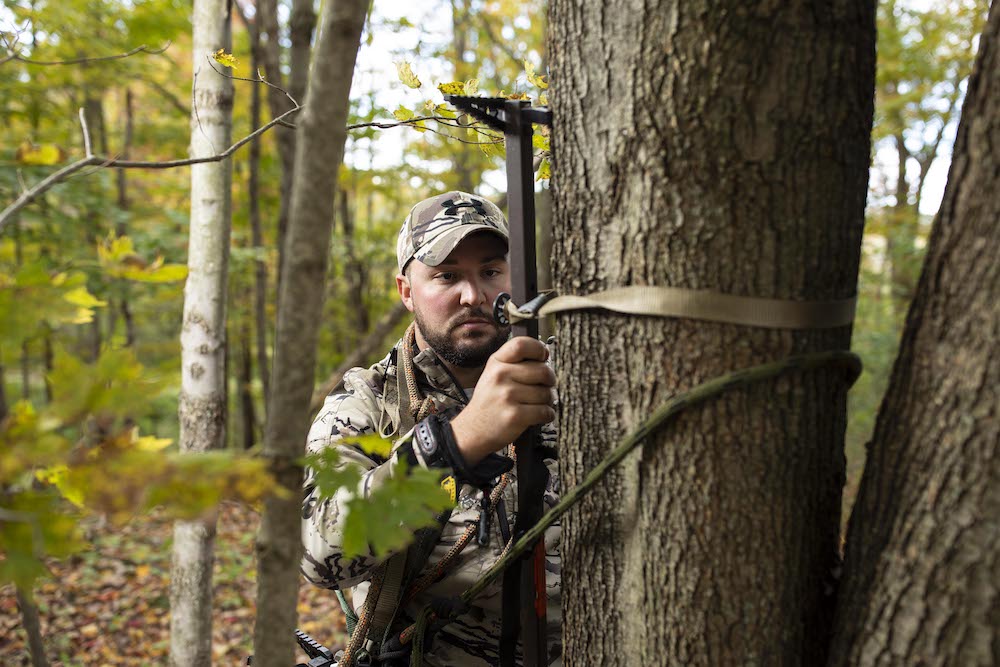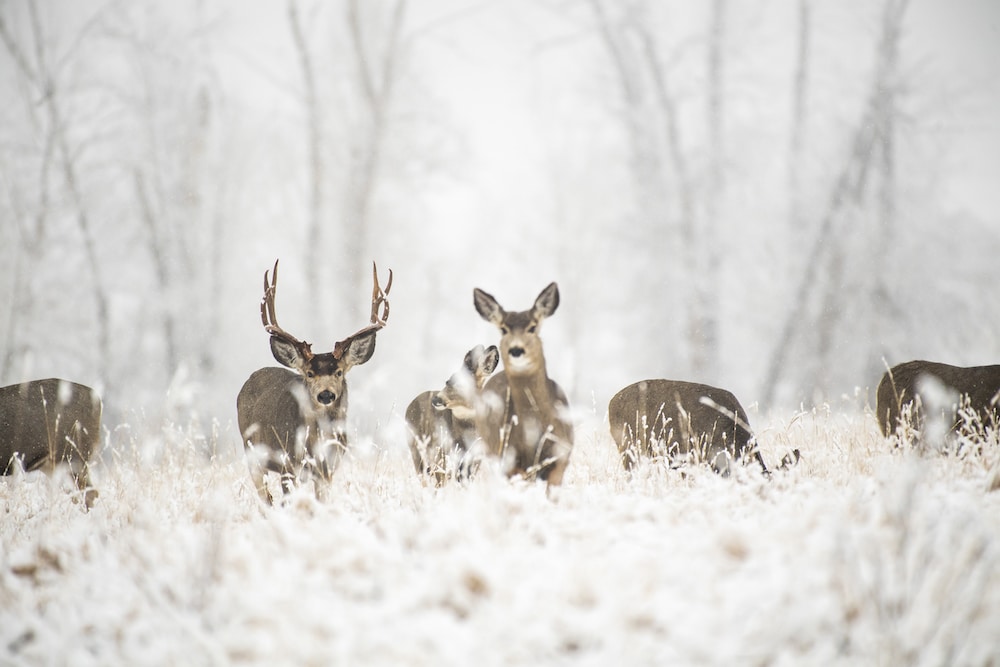Are you feeling the post-bowhunting season blues? Just because the season is over doesn’t mean there’s no important work to be done. It might not be as exciting as sitting in a treestand, but the work you do in the offseason is what brings success. And it’s never too early to start.
Reflect on your hunts while the memories are still fresh in your mind. Review the successes. Note what you did right. Success doesn’t always mean a notched tag. It can be finding game in a new place, getting within range but not having a shot, or successfully calling in an animal.
Next, review the mistakes. This can feel like a gut punch. It’s not always easy to admit a misstep. Don’t block out the bad memories, though, because they help make you a better bowhunter. Analyze what you did wrong and make a plan for improvement.
Here’s my biggest mistake from the last archery season. I was hiking in the dark into a cow elk-only area. I knew if I found a bull, I’d likely find cows too. I was more than a mile into my hike, and I hadn’t heard a bugle yet. I thought that was unusual for the peak of the rut in this area. It was still too dark to see, but I was impatient and beginning to think there weren’t any elk.
I knew it was to my advantage to remain undetected. But I also knew a cow call could trigger a bugle and let me know my morning wasn’t wasted. My impatience got the best of me. Against a gut feeling, I cow called. A bull immediately responded with a bugle. There was a split-second of excitement. Nothing is cooler than hearing a bugle so close in the dark. But it was quickly followed by the realization that I had made a mistake.
The bull’s accompanying cows did not like my call because I was so close. It was still too dark to see anything, but I heard rocks sliding down the hillside just below me as the elk moved away, quickly. When daylight broke just a few minutes later, the herd was gone. The wind was swirling, and they might have winded me too. But had I continued to stay quiet and move undetected, things might have ended differently.

Replace old gear and test any new gear now, so there are no surprises during hunting season. Photo Credit: ATA
Is your clothing still stuffed in a duffel, unwashed? Is your pack still carrying your kill kit and some snacks? Don’t wait to unpack until you’re repacking for next season. Now is the time to clean up and inventory everything.
Wash your clothing in scent-free soap. If you wait too long, bloodstains and mud can settle in. Pack everything away in a duffel or tote. This will make clothing last longer. Clean out your pack and put everything away. Unattended snacks can create unwanted smells or, worse, lead to rodents or pets chewing through the pack.
Winter is a great time to analyze your gear. What worked well? What didn’t work? Think back about how your gear performed in the field. If your feet were cold, maybe it’s time for wool socks or a new pair of boots. If your rain gear didn’t keep you dry, maybe it’s time to treat it with water-repellent spray. Is your treestand safety harness out of date? If so, purchase a new one.
Don’t wait until the days before the season to buy new gear. Procrastinating will mean you’ll pay top dollar. Make a list of what you need. Hunting gear makes for a great gift idea. Tell your parents, friends or partner what you need and maybe you’ll get it for a birthday or a special occasion. When you know what you need, you keep an eye out for sales. Getting gear at a bargain price is a bonus.
When you buy new equipment or clothing just days before the season opens, you don’t have time to get comfortable with it. This could be a costly mistake. Take the time to learn before going into the woods. For example, I switched to a hook release for the 2021 season. I spent several months practicing with my new release before going afield. But even a change as simple as new clothing can make a big difference. I once waited until the very last minute to buy a new pair of hunting pants for early season only to have them be too noisy to use in the field.

Take down your treestands according to state guidelines and to maintain its safety. Photo Credit: ATA
Many states have rules about leaving equipment like treestands and trail cameras in the field in the offseason on public lands. Know the rules and be sure to follow them. Treestands are expensive, and you want them to stand the test of time. Keeping them out of the elements extends their life. It’s also an important safety check. If you leave a treestand for several months, it might not be safe the following year. Trail cameras also last much longer if they’re taken down.

You don’t have to wait until spring to scout. Photo Credit: John Hafner
Many people make the mistake of waiting until summer or fall to scout. But scouting immediately after the season is a great time to see where game hangs out during hunting season because the sign is still fresh and visible, and the summer foliage hasn’t grown back. If you didn’t get a chance to check out an area during hunting season, go back for a look around before things green back up in the spring.
There’s a lot to love about bowhunting. It has a never-ending learning curve and is full of new experiences. Spend the offseason becoming a better bowhunter through education. There are lots of bowhunting-related books on the market covering a variety of topics. You can watch YouTube videos, too, but make sure they’re from a reliable source.
Swap stories with hunting buddies. This is a fun and informative way to learn. Everyone is so busy during hunting season that it’s often too chaotic to get together. Plan a barbecue, a meetup or even a Zoom during the slower season. Share successes and lessons learned. Sometimes a good friend or mentor can offer some advice and talk you through what you could’ve done differently. This is a great time to share gear recommendations. You can be helpful without giving away all your trade secrets.
Don’t be sad the season is over. If you start preparing now, you’ll stay busy until next season arrives, and you might find more success when it does.